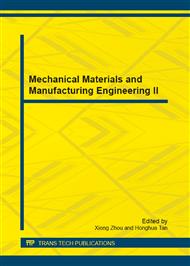p.3
p.9
p.14
p.20
p.26
p.31
p.37
p.43
p.48
Effect of Austenizing Temperature on Microstructures and Mechanical Properties of Cr-W-Ni-Alloy Steel
Abstract:
An investigation was made to determine the effect of austenizing temperature on microstructure and tensile properties of Cr-W-Ni-alloy steel. Correlations of microstructure tensile properties and austenizing temperature parameters were established. Analysis of optical and scanning electron microscope show that there were a lot of coarse spherical undissolved carbides dispersed on the lath martensitic matrix in as-quenched specimens when austenized at 900°C while there were only very little nanometer carbides when austenized at 1000°C and 1100°C. The tensile properties show that austenizing temperature had large effect on the mechanical property of the Cr-W-Ni-alloy steel. Oil quenching after austenized at 1100°C for 26 minutes followed with tempering at 260°C for 3h, Cr-W-Ni-alloy steel obtained best strength and ductility match.
Info:
Periodical:
Pages:
26-30
Citation:
Online since:
December 2012
Authors:
Price:
Сopyright:
© 2013 Trans Tech Publications Ltd. All Rights Reserved
Share:
Citation:


